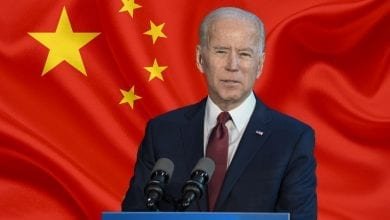‘Visible Hand’: A Guide to Help You Better Understand Economics
Life is not about what we want. It is about the choices we make. Many of us are familiar with this old saw, but how many know that it is more than merely a life lesson, that it is in fact the central core of economics?
Matthew Hennessey’s new book, Visible Hand: A Wealth of Notions on the Miracle of the Market, explains how this is so, and in so doing he shows that economics need not be intimidating to the man on the street. In fact, as someone who confesses to have known nothing about economics before age 30, Hennessey, who is currently an opinion editor at the Wall Street Journal, reveals that we intuitively understand it even when we do not realize it.
Take the notion of “opportunity cost.” Hennessey notes that we all face choices about where to spend our time, energy, and money. In high school, for example, Hennessey mentions he had the desire to both act in the school play and go out for the baseball team, but because they overlapped with one another, he had to choose between them. If he chose the play, he had to give up baseball, and vice versa.
As it happened, he chose acting. Losing the chance to play baseball was thus an “opportunity cost” of that decision. And it was not the only one. Indeed, choosing the play meant foregoing opportunities to work, study, or spend time with friends, all of which were viable options before he made his decision. The point, then, is that we live in a world where resources (including time) are scarce and yet our wants are unlimited, meaning that there are no “solutions” to satisfying all of our desires, there are only alternatives, and choosing among them always entails opportunity costs.
Thus, if “scarcity” is the first lesson of economics, one consequence is that our decisions are made on the margin, or relative to whether we want more or less of something. To see this, consider the choice between water and diamonds, also known as the “diamond-water paradox,” which befuddled economists for nearly a century. Even though water is essential for life and diamonds are not, if given the choice (and assuming all things are equal), we would choose to have diamonds over water.
Why?
The answer is that when we make a choice, we are not choosing between all the diamonds in the world and all the water in the world, in which case we would choose to have water for our survival. Rather, we are choosing between having more water or having an additional diamond. Given water’s relative abundance, having more of it provides little added satisfaction; conversely, because of their relative scarcity, having an additional diamond provides considerable satisfaction, or “marginal utility,” compared to water.
From here, Hennessey adds the common sense notion that the more we have of something, the less we tend to want it, which economists call “diminishing marginal utility.” He illustrates this with a brilliant example that may be the most memorable in the book. Imagine, he says, you are at a local fair and that you have not eaten all day. As you peruse the food options, you and your friends decide to buy a childhood favorite, cotton candy. “The first bite,” he says, is delicious.”
Everybody smiles with their eyes as it melts in their mouths. The fun and laughter build toward the second bite, but the thrill peaks immediately. Maximization has been momentarily achieved. It hangs like a punted football in the air. At the third bite, the fun is over. Everyone is disgusted with themselves. You and your friends wish you could turn back the clock and skip the cotton candy altogether.
If marginal utility is the satisfaction we receive from having the cotton candy compared to alternatives, the dwindling satisfaction that comes from each additional bite of cotton candy constitutes the concept of diminishing marginal utility. As Hennessey puts it, “each bite of cotton candy yields less pleasure, less benefit, less satisfaction than the one before.” The takeaway? Our decisions are always made in a relative sense–whether to have the next bite of cotton candy or not–and not in an absolute sense–whether to have every bite of cotton candy or no bites at all.
This is an essential economic lesson our politicians would do well to learn. After all, because people make decisions at the margin, an income tax rate that is too high can discourage people from undertaking additional income-earning opportunities, meaning that high taxation ends up reducing well-being, even when it may not seem obvious (see, for example, economist Greg Mankiw’s personal testimony of this here). Yet politicians seldom acknowledge this fact when they bluster about all the goodies their heavy tax and spend policies will provide.
Furthermore, Hennessey points out that the relationship between “supply” and “demand” is not as confusing as it often seems, because they are in fact two sides of the same coin. That is, supply is demand, and vice versa. He helps the reader see this by using the example of a Lego company his son likes. When the Lego company sells Legos to consumers, its employees turn around and spend money on groceries, gas, and entertainment. Thus, the “supply” of Legos constitutes the “demand” for other goods and services in the economy.
Nevertheless, the book is replete with lessons like this that are eminently relatable, and it is written in a way that is both accessible to and fun for the non-specialist. Most importantly, perhaps, the reader will come away from it knowing that while life comes down to the choices we make, economics does too.
Content syndicated from Fee.org (FEE) under Creative Commons license.
Agree/Disagree with the author(s)? Let them know in the comments below and be heard by 10’s of thousands of CDN readers each day!




